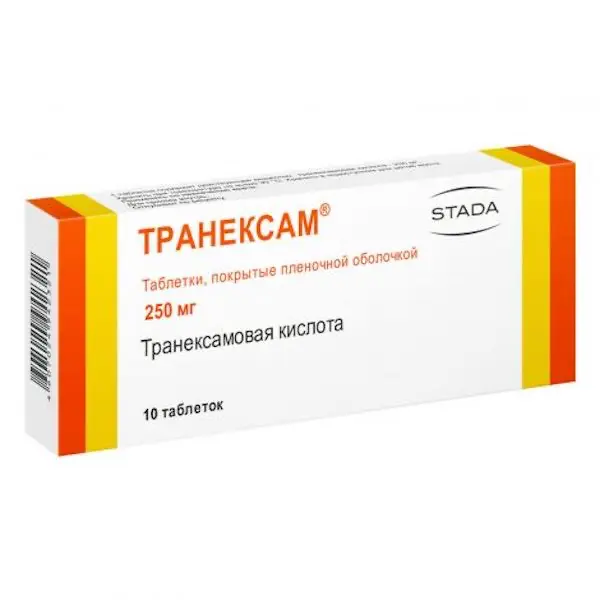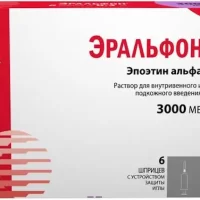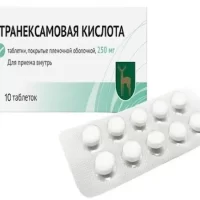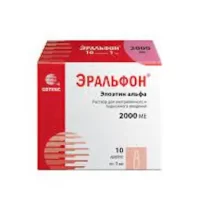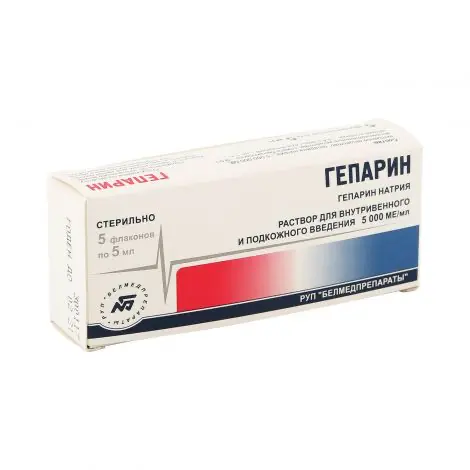Description
Tranexam Pharmacodynamics
Antifibrinolytic agent. Tranexamic acid specifically inhibits the activation of profibrinolysin (plasminogen) and its conversion into fibrinolysin (plasmin). It has local and systemic hemostatic action in bleeding associated with increased fibrinolysis (platelet pathology, menorrhagia). Also tranexamic acid by inhibiting the formation of kinins and other active peptides involved in allergic and inflammatory reactions has anti-allergic and anti-inflammatory effects.
Indications
Short-term treatment of bleeding associated with increased fibrinolysis in the following pathological conditions:
– Prostatectomy; surgical interventions on the bladder;
– Menorrhagia;
– Nasal bleeding;
– Cervical conization;
– Traumatic hyphema (hemorrhage in the anterior chamber of the eye).
Prevention and treatment of bleeding in patients with hemophilia who undergo minor surgical intervention (including tooth extraction);
Hereditary angioedema (prevention of exacerbations of the disease). Bleeding during pregnancy.
Contraindications
– Hypersensitivity to tranexamic acid or other components of the drug;
– Severe chronic renal failure (glomerular filtration rate [GFR] less than 30 mg/mL/1.73m2) due to the risk of cumulation;
– Venous or arterial thrombosis at present or in the anamnesis (deep leg vein thrombosis, pulmonary embolism, intracranial thrombosis, etc.) when simultaneous therapy with anticoagulants is impossible;
– Fibrinolysis due to consumption coagulopathy (hypocoagulable stage of disseminated intravascular coagulation syndrome [DIC]);
– A history of seizures;
– Acquired color vision impairment;
– Subarachnoid hemorrhage (due to the risk of cerebral edema, ischemia, and cerebral infarction);
– Children under 3 years of age (solid dosage form).
Dosage and administration method
- Orally, regardless of meals.
- Short-term treatment of bleeding due to increased fibrinolysis: the recommended standard dose of tranexamic acid is 15-25 mg/kg body weight, an average of 1000-1500 mg 2-3 times a day.
- – In prostatectomy and surgical interventions on the bladder: 1000 mg 6 hours before surgery, then 1000 mg 3-4 times a day until macrohematuria disappears. It is not recommended to use the drug more than 2 weeks after surgical intervention.
- – In case of menorrhagia: the recommended dose is 1000 mg 3 times daily until cessation of menorrhagia, but not more than 4 days. In case of profuse bleeding, the drug dose may be increased, but the total daily dose should not exceed 4000 mg. Treatment with tranexamic acid should not be started before menstrual bleeding. In clinical trials tranexamic acid has not been used for more than three consecutive menstrual cycles.
- – In recurrent nasal bleeding: 1000 mg 3 times a day for 7 days.
- – After cervical conization surgery: 1500 mg 3 times a day for 12 days after surgery.
- – In traumatic hyphema: 1000-1500 mg 3 times a day (target dose 25 mg/kg body weight) for 7 days.
- Patients with hemophilia: the drug is administered orally in dose 25 mg/kg of body weight 2 hours before dental extraction and then in 1000-1500 mg 3 times daily during 6-8 days. Preparations of blood clotting factors VIII or IX should be prescribed at the same time.
- In hereditary angioedema: 1000-1500 mg 2-3 times a day. If patients can anticipate exacerbation of disease, the drug may be taken intermittently, depending on the presence of prodromal symptoms. In other cases the drug should be taken continuously.
- Bleeding during pregnancy: 250-500 mg 3-4 times a day until complete stopping of bleeding. The average duration of treatment course is 7 days.
- Renal dysfunction
- In patients with mild to moderate renal excretory dysfunction, the dose and frequency of tranexamic acid administration should be corrected:
- Serum creatinine concentration Glomerular filtration rate
- (Tranexamic acid dose
- Frequency of ingestion
- 120-249 μmol/L
- (1.36-2.82 mg/dL) 60-89 mL/min/1.73m2 15 mg/kg body weight 2 times daily
- 250-500 μmol/L
- (2.83-5.66 mg/dL) 30-59 mL/min/1.73m2 15 mg/kg body weight once daily
- Impaired liver function
- No dose adjustment is required in patients with hepatic impairment.
- Elderly age.
- No dose adjustment is required in elderly patients in the absence of renal impairment.
- Childhood
- Data regarding the efficacy and safety of tranexamic acid preparations in children are limited.
- In children tranexamic acid is prescribed at a rate of 25 mg/kg body weight 2-3 times a day.
- If one dose is missed, the next dose of the drug should be taken at the prescribed time. Do not take a double dose of the drug after missing another dose.

